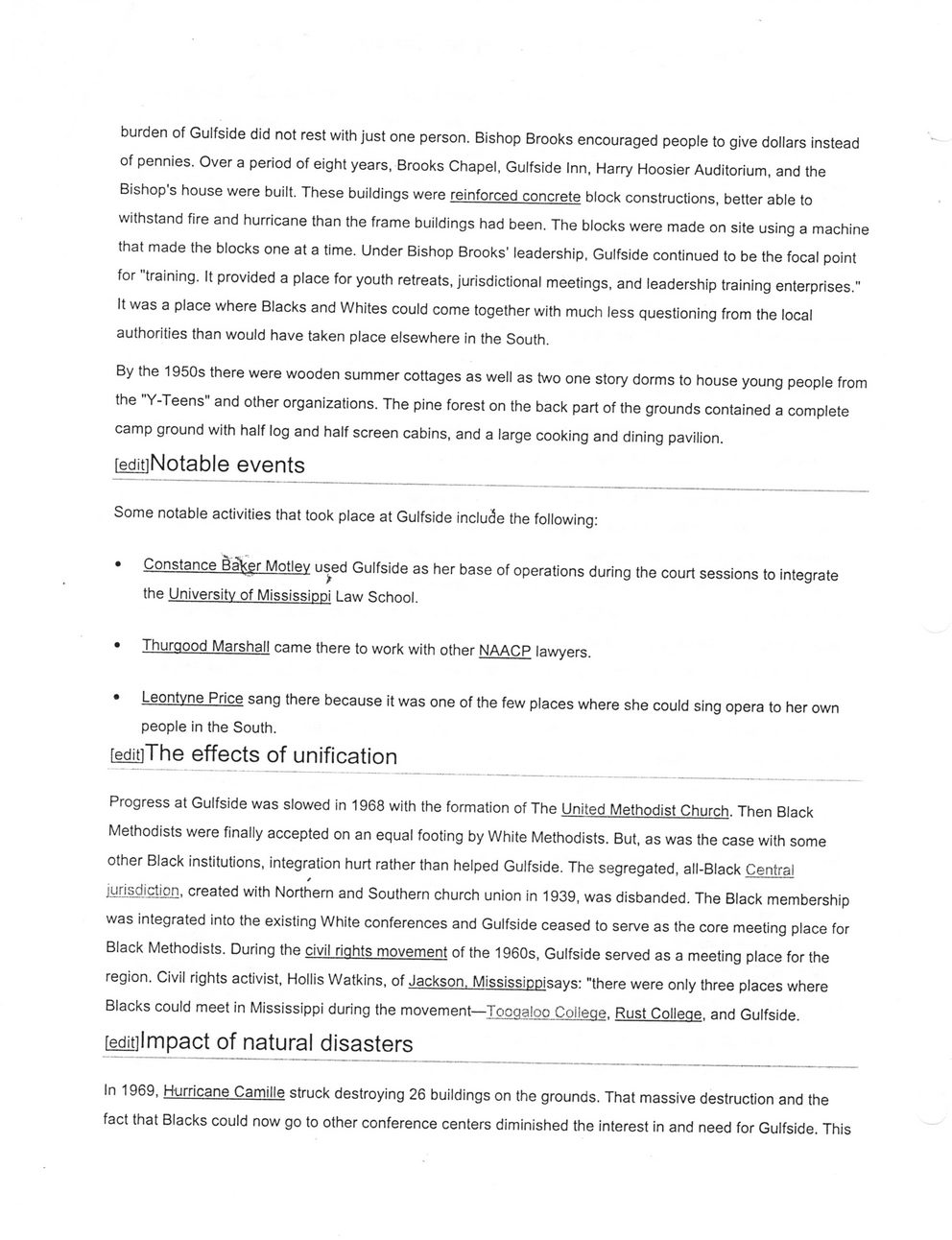This text was obtained via automated optical character recognition.
It has not been edited and may therefore contain several errors.
burden of Gulfside did not rest with just one person. Bishop Brooks encouraged people to give dollars instead of pennies. Over a period of eight years, Brooks Chapel, Gulfside Inn, Harry Hoosier Auditorium, and the Bishop's house were built. These buildings were reinforced concrete block constructions, better able to withstand fire and hurricane than the frame buildings had been. The blocks were made on site using a machine that made the blocks one at a time. Under Bishop Brooks? leadership, Gulfside continued to be the focal point for "training. It provided a place for youth retreats, jurisdictional meetings, and leadership training enterprises.? It was a place where Blacks and Whites could come together with much less questioning from the local authorities than would have taken place elsewhere in the South. By the 1950s there were wooden summer cottages as well as two one story dorms to house young people from the "Y-Teens" and other organizations. The pine forest on the back part of the grounds contained a complete camp ground with half log and half screen cabins, and a large cooking and dining pavilion. [editjNotable events Some notable activities that took place at Gulfside include the following: ? Constance BaVer Motley used Gulfside as her base of operations during the court sessions to integrate the University of Mississippi Law School. ? Thurqood Marshall came there to work with other NAACP lawyers. ? Leontyne Price sang there because it was one of the few places where she could sing opera to her own people in the South. reditiThe effects of unification Progress at Gulfside was slowed in 1968 with the formation of The United Methodist Church. Then Black Methodists were finally accepted on an equal footing by White Methodists. But, as was the case with some other Black institutions, integration hurt rather than helped Gulfside. The segregated, all-Black Central jurisdiction, created with Northern and Southern church union in 1939, was disbanded. The Black membership was integrated into the existing White conferences and Gulfside ceased to serve as the core meeting place for Black Methodists. During the civil rights movement of the 1960s, Gulfside served as a meeting place for the region. Civil rights activist, Hollis Watkins, of Jackson. Mississippisavs: "there were only three places where Blacks could meet in Mississippi during the movement?Tooqaloo College. Rust College, and Gulfside. [edit] Impact of natural disasters In 1969, Hurricane Camille struck destroying 26 buildings on the grounds. That massive destruction and the fact that Blacks could now go to other conference centers diminished the interest in and need for Gulfside. This

Amish 27